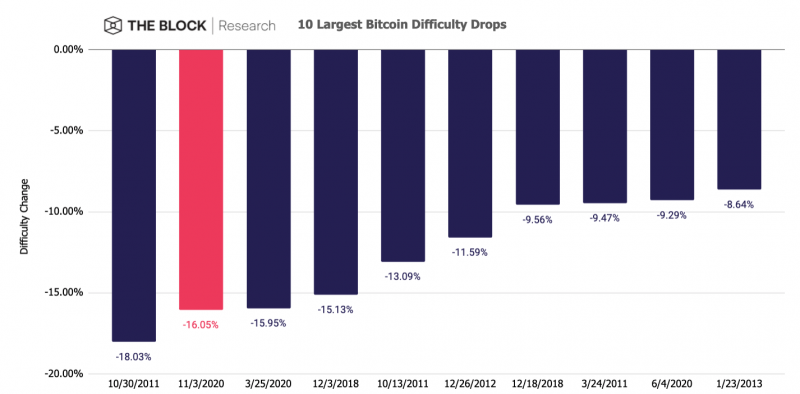Bitcoin mining difficulty posts biggest drop since ASIC era


Bitcoin's mining difficulty, a measure of the competitiveness for winning block rewards, has just posted the largest percentage drop since October 2011.
The network adjusted its mining difficulty at 8:28 UTC time on Tuesday, which dropped by 16.05% from the previous level of 20 Trillion to right now 16.7 Trillion, according to BTC.com.
Data compiled by The Block shows that has reset the record of the second-largest mining difficulty drop in bitcoin's history, which was previously seen on March 26 after the crypto market's mega sell-off on March 12.

Today's adjustment also marks the largest percentage decline since bitcoin mining entered the ASIC era around 2013.
The difficulty drop is a result of the decline of the average total computing power racing on the network in the last two weeks as many Chinese miner operators have unplugged their machines to migrate to fossil fuel power stations from hydropower plants.
The decline of bitcoin's mining competitiveness will push up bitcoin miner's daily revenue per terahash second of computing power in the coming days, which is already reaching its highest point since the block reward halving in May.



